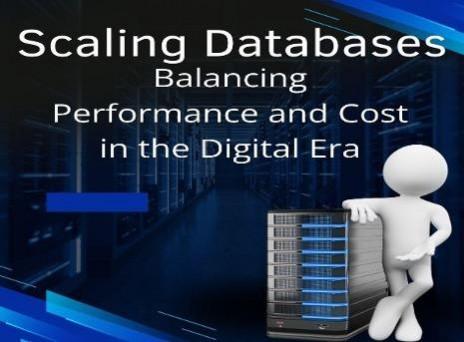
In today's data-driven landscape, efficient database scaling is crucial to maintaining performance and cost-effectiveness. Uday Kumar Manne, an authority in database architecture, explores the strategic choices between horizontal and vertical scaling, offering insights into their benefits, limitations, and future implications. His analysis provides essential guidance for architects seeking optimal scaling approaches tailored to specific application needs.
Vertical Scaling: Enhancing Power on a Single Server
Vertical scaling, or scale-up, focuses on improving the performance of a single database server by upgrading its resources—such as CPU, RAM, and storage. Traditional relational databases benefit from this approach, where boosting a server's capacity directly improves query response times and throughput, particularly for CPU-bound and memory-intensive tasks.
However, vertical scaling has limitations. Hardware improvements eventually reach a point of diminishing returns, where further upgrades provide minimal benefits. Additionally, this approach relies on a single server, which can lead to a single point of failure, increasing the risks to reliability. Despite these downsides, vertical scaling remains advantageous for applications with stable, predictable growth and complex query patterns.
Horizontal Scaling: Distributing Workloads Across Multiple Servers
Horizontal scaling, or scale-out, distributes data and processing across multiple servers or nodes. This approach supports scalability for high-traffic applications by adding servers to the cluster, a necessity in distributed and NoSQL database environments where large data volumes are typical.
Horizontal scaling's benefits include high fault tolerance through data replication, ensuring that system performance is maintained even if individual nodes fail. However, managing a distributed database poses challenges, particularly with maintaining data consistency and handling complex transactions. Furthermore, this approach often incurs higher infrastructure and operational costs, making it best suited for applications requiring massive data handling and global distribution.
Hybrid Scaling Approaches: Combining the Best of Both Worlds
Hybrid scaling merges vertical and horizontal approaches to balance performance, scalability, and cost. This method may vertically scale a primary database for essential tasks while horizontally scaling read replicas to handle high query volumes. Cloud solutions further enhance hybrid scaling, allowing elastic resource adjustment to match demand, ideal for variable workloads. Increasingly popular, hybrid scaling optimizes resource use without sacrificing performance or resilience, offering up to 30% improved database performance over single-scaling methods for applications with mixed demands.
Emerging Trends in Database Scaling
Database scaling continues to evolve, with trends like serverless and autonomous databases shaping the future:
- Serverless Databases: Serverless databases automate scaling, adjusting resources in real-time based on demand. This approach simplifies management by eliminating manual scaling, making it ideal for variable workloads. However, challenges remain, particularly around stateful computations and data consistency in distributed environments.
- Autonomous Databases: These systems leverage AI to automate performance tuning, security, and scaling. By continuously monitoring workloads, autonomous databases adjust resources as needed, potentially using both vertical and horizontal scaling strategies. This trend reduces the complexity of database management, optimizing resources and lowering operational costs.
Cost Considerations: Balancing Upfront and Long-Term Expenses
Cost plays a central role in selecting a scaling strategy. Vertical scaling requires significant upfront investment in high-performance hardware, though operational costs are lower due to simpler management. Conversely, horizontal scaling enables gradual expense growth but involves higher maintenance costs for distributed systems. Cloud-based horizontal scaling can reduce expenses by dynamically adjusting resources based on demand. Hybrid approaches offer a balanced solution, allowing organizations to manage both immediate and long-term costs effectively, especially useful for companies with unpredictable growth.
Choosing the Right Scaling Strategy
Choosing between vertical and horizontal scaling depends on application needs. Vertical scaling suits applications with limited growth and centralized data, while horizontal scaling is better for high-concurrency, distributed environments. Hybrid strategies combine vertical reliability with horizontal scalability for complex scenarios. Database architects should evaluate each approach based on workload patterns, growth forecasts, and budget. New solutions, like autonomous and serverless databases, expand options, helping architects optimize performance and efficiency.
In conclusion, Uday Kumar Manne emphasizes that selecting a scaling strategy—vertical, horizontal, or hybrid—depends on specific application needs, growth projections, and budget. While traditional methods offer clear benefits, emerging serverless and autonomous databases promise dynamic, automated solutions. Staying informed on these trends is crucial for making cost-effective, future-ready scaling decisions.

















